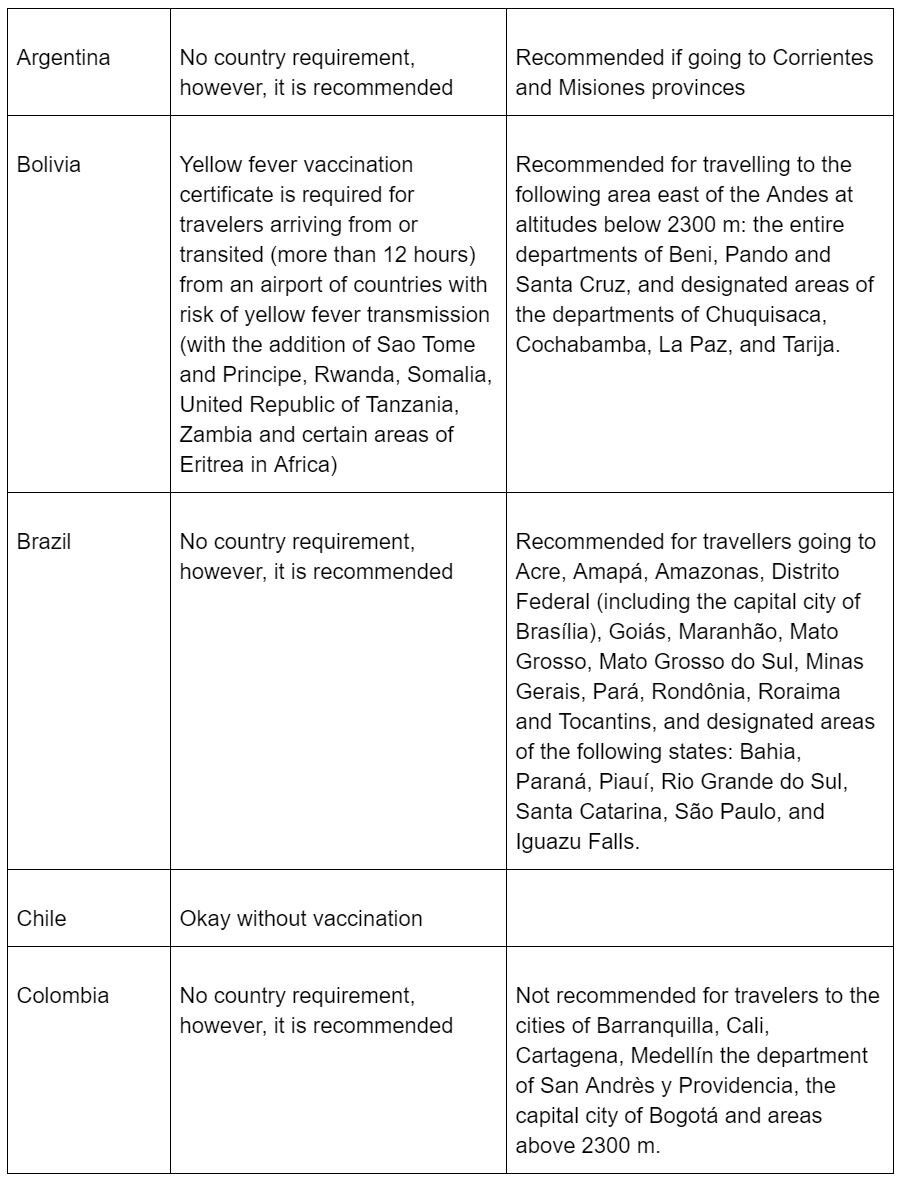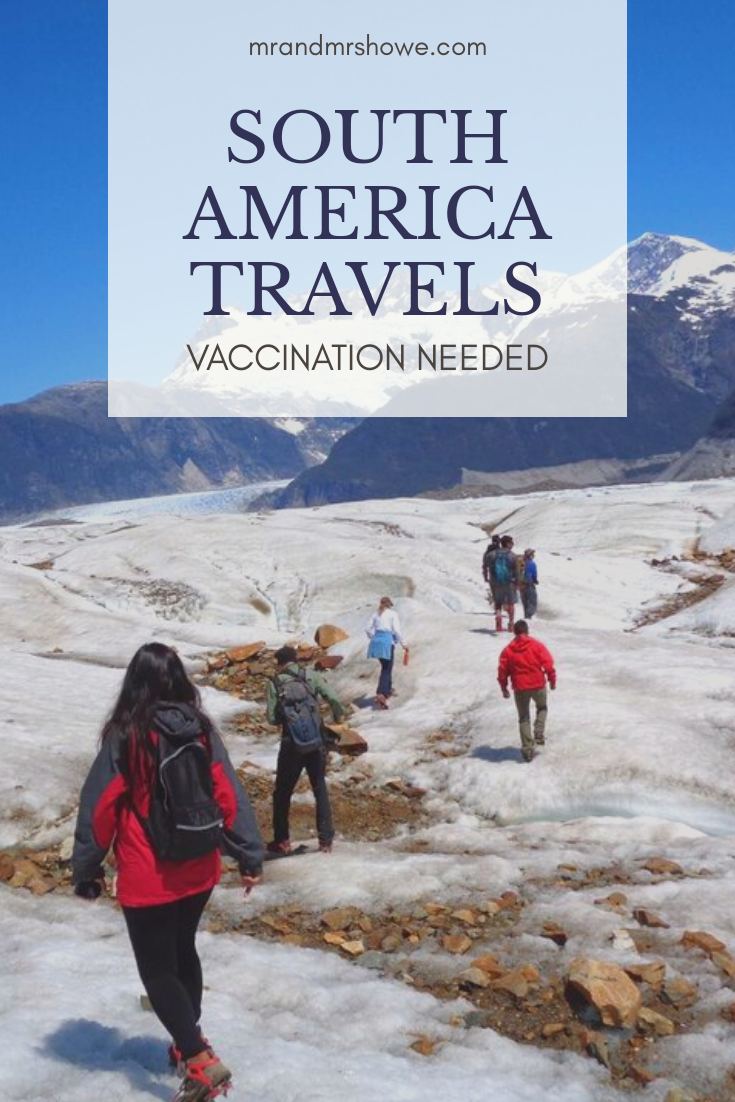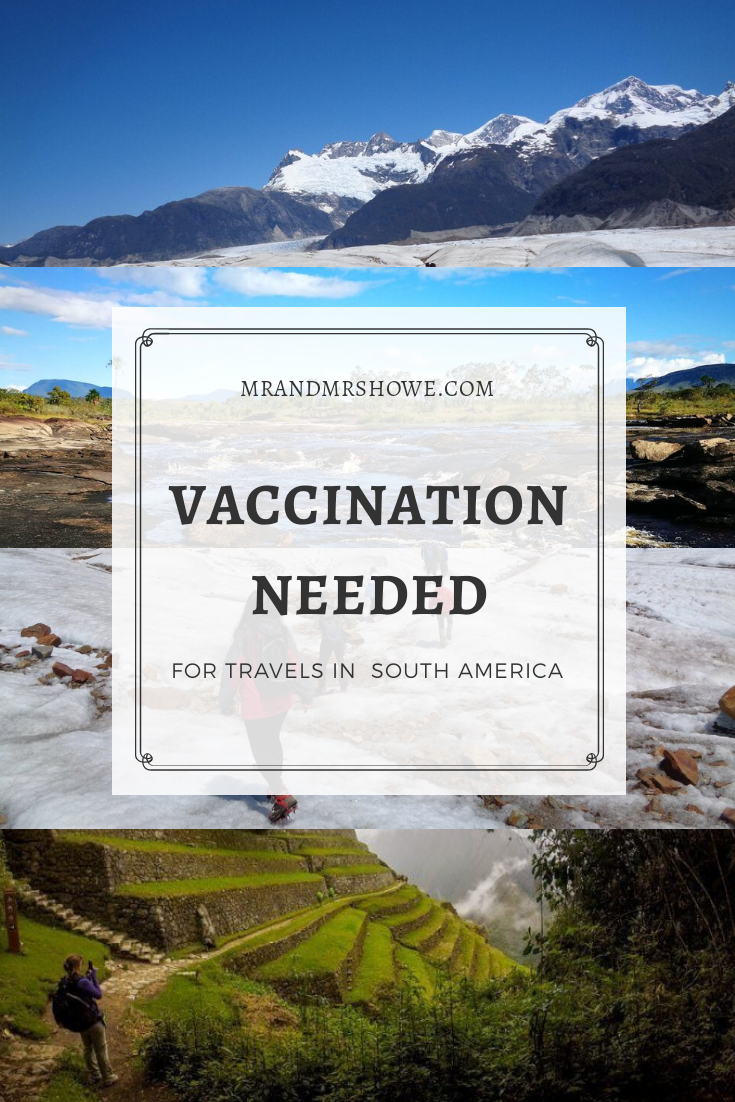Vaccines Needed for Travel in South America - Guide to Vaccination Before Traveling
When going to another place, the environment, the temperature, and the practices are different from our country. It may be hotter or colder; the streets are cleaner or dirtier – it varies. When we go out to travel, our health should be a priority. We can’t enjoy our time going out if we get sick. Our times will be spent in the bed recovering when we should’ve been out there and feeling the country’s vibe.
Vaccinations are essential. Prevention is better than cure. If you travel, you need to stay healthy and avoid being sick, being vaccinated may help you avoid unwanted diseases. South America is a vast country full of enormous jungles or nature reserves, mountains to hike, and various foods to eat. Here are the vaccinations needed for travels in South America:
Routine vaccinations for international travel and health as per World Health Organizations:
Diphtheria
Hepatitis B
Haemophilus Influenzae type b
Human papillomavirus
Seasonal influenza
Measles
Mumps
Pertussis
Rubella
Pneumococcal disease
Poliomyelitis (Polio)
Rotavirus
Tuberculosis (TB)
Tetanus
Varicella
The following are additional vaccinations recommended for South America:
Cholera
Hepatitis A
Rabies
Yellow Fever
In case you want to know more, here is the explanation for those vaccinations:
Cholera
How it spreads: Infected food or water
Recommended if you travel to poorer countries or remote areas
Cholera is caused by a toxic bacteria that multiply in the small intestine resulting in intense vomiting, watery poop leading to dehydration and if not cured immediately death.
Hepatitis A
How it spreads: Contaminated food or water
Recommended for most travelers
Hepatitis A is from a virus infecting liver cells and causes its inflammation. Its symptoms are like flu however those who have Hep A have dark yellow urine, and jaundice (skin and the white of eyes become yellowish.)
Rabies
How it spreads: Bite or Scratch from infected animals
Recommended for most long-term or animal-contact travelers
Rabies virus invades the nervous system of mammals; it transfers from an animal’s saliva. Rabies usually comes from dogs, so be very careful in petting random dogs in the streets. A dog may have rabies if it bites without being provoked, running for no reason or excessive salivation or foaming of the mouth. If a person bitten has pain and itching in the wound, hyperactivity, sensitivity to noise and fear of water, he/she might have rabies.
Note: Even if vaccinated by rabies, a person needs another shot if the bite resulted in bleeding and the animal that bit the person is dead, displays rabid behavior or is positive of rabies. If the dog is vaccinated, another shot is not needed.
Yellow Fever
How it spreads: Infected Mosquito Bite
A mosquito becomes infected when they bite an infected human or monkey and infects another person through biting him/her. It is a big step above normal fever because it also causes internal bleeding, shock, organ failure and death.
Here is the recommendation per country according to the World Health Organization:
As for routine vaccines, here are the explanations:
Diphtheria
How it spreads: infected wound or person-to-person contact
The bacteria lives in mouth, throat, and nose and produces a potent toxin that kills cells.
Hepatitis B
How it spreads: Open sores, contact with blood or exchange body fluids (Sex, needles, etc.) with someone infected
HepB causes an infection of your liver that can scar organs, liver failure or cancer.
Haemophilus Influenzae type B
How it spreads: Airborne
This also triggers possibly serious inflammatory infections of the face, mouth, blood, joints, heart, bones, peritoneum, and trachea as opposed to regular influenza
Human papillomavirus
How it spreads: enter through wounds, Skin to skin contact, Sex
The most common sexually transmitted infection, it can cause genital wart or cervical cancer
Seasonal influenza
How it spreads: Airborne
Acute respiratory infection
Measles
How it spreads: Airborne, through Cough or Sneeze of an infected person
This contagious respiratory can cause a rash and fever.
Mumps
How it spreads: Saliva or sharing utensils
Mumps causes inflammation of salivary glands. A person may have puffy cheeks and a tender, swollen jaw.
Pertussis
How it spreads: Airborne
Whooping cough creates uncontrollable, violent coughing, often making breathing difficult
Rubella
How it spreads: Cough or sneeze from an infected person
Milder than measles however if a pregnant woman has German measles, it can cause severe birth defects.
Pneumococcal disease
How it spreads: Cough or sneeze from an infected person
It can cause a middle ear infection, a blood infection, pneumonia, or bacterial meningitis.
Poliomyelitis (Polio)
How it spreads: Contaminated food or water
The virus extends to the brain and spinal cord of an infected person and may trigger paralysis.
Rotavirus
How it spreads: Contaminated food or water
Common with babies, Rotavirus can cause diarrhea leading to dehydration.
Tuberculosis (TB)
How it spreads: Cough or sneeze from an infected person
The bacteria usually attack the lungs; TB is slow though and might not be known in an early stage.
Tetanus
How it spreads: Wound
Commonly known as lockjaw, this is a disease that impacts your nervous system, resulting in painful muscle contractions, especially of the muscle of your jaw and neck.
Varicella
How it spreads: Direct Contact or Airborne
Chickenpox is a contagious disease that can cause an itchy rash with small, fluid-filled blisters.
I think most of us when we were babies or a kid have gotten recommended vaccinations, but better check from your parents or talk to a doctor. I remember crying before and after my anti-tetanus shot during elementary. I'm not too fond of needles, FYI. However, even if I hate them, I need it for my travels.
Health is important, so even if you spend a considerable amount of money for these vaccinations, remember hospital bills cost more. Staying in bed is also a waste of time especially if you can spend it exploring a new place instead. So, better get this vaccination before going to South America.
Are you on Pinterest? Pin these!














![Travel Guide to Sarajevo, Bosnia and Herzegovina [with Sample Itinerary]](https://images.squarespace-cdn.com/content/v1/5806a87f6a4963c2ddce112c/862dad96-56d7-4e16-8321-6b74b78c488c/Travel+Guide+to+Sarajevo%2C+Bosnia+and+Herzegovina+%5Bwith+Sample+Itinerary%5D1.jpg)

